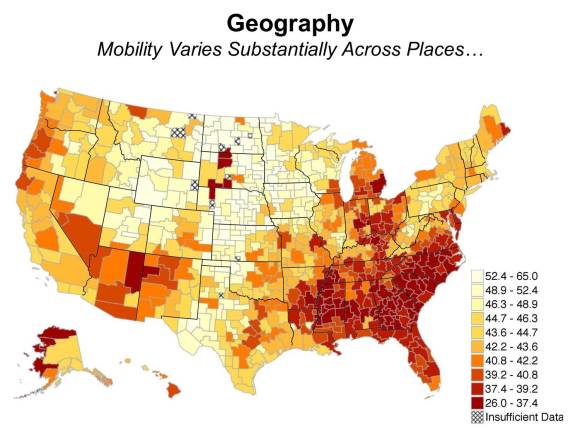A large new study by economists from UC Berkeley and MIT shows that “The odds of moving up — or down — the income ladder in the United States have not changed appreciably in the last 20 years.” In fact, according to one of the key authors, “the studies suggest that rates of intergenerational mobility appeared to have held roughly steady over the last half-century.” (see: equality-of-opportunity.org)

How much US social mobility is there?
The study demonstrates that it is much harder – 2.5 times harder – to move all the way from the bottom to the top income bracket than it is to move to the top from the middle. (Income is typically stratified into five different income brackets that segment people’s earnings.) Specifically, The study reports that:
Around 8 percent of people born in the bottom fifth in the 1980s have moved to the top fifth.
Roughly 20 percent born in the middle fifth climbed into the top fifth as adults.
To put this key social determinant in context: the study notes that rates of social mobility have not improved for decades despite the establishment of a bigger safety net; and declines in some forms of discrimination have not triggered improvements in US social mobility either.
How does the US compare to other countries?
Although we imagine that we have much greater income mobility than old world Europe, this study shows that the odds of escaping poverty are higher in much of Western Europe and Canada. In fact, the study reports that the highest rates of social mobility are now in countries like Denmark, where it is twice as high as in the US.
